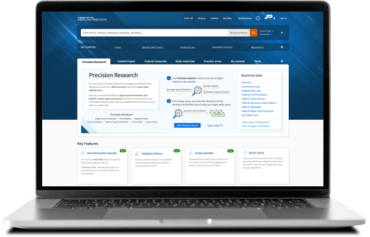Long working hours and high stakes, high-pressure deals are nothing new to legal professionals. It looks like the hours are getting longer though, and the pressure is getting more intense. One recent study of junior lawyer working times found that young professionals are working up to two hours later and longer per day compared to before the pandemic.
In fact, according to Paula Davis, writing for Reuters, “almost 40% of public defenders in Wisconsin meet the criteria for burnout.” Davis, who is the CEO of the Stress and Resilience Institute, also noted that “burned-out lawyers are less committed to their organizations and report lower identification with organizational goals.”
Davis notes that overwork and lack of resources are major contributors to lawyer burnout. Legal researchers are often caught between the need for efficiency and the need to know they’ve been thorough. “When can I stop?” is a question that haunts them.
This is especially true for those who have been burned when opposing counsel found something they didn’t, or when they missed some preference in a judge that they should have managed around. It’s part of the reason senior attorneys push new associates so hard.
“The problems legal researchers are solving haven’t changed significantly in the past thirty years,” says attorney and Thomson Reuters Law School Account Manager Mark Frongillo. “What has changed are the tools they have to solve the problems. When I practiced law and then began training future lawyers, we started with book research. Now, law professors, students, librarians, and associates alike are conducting research the way they think: by asking questions, considering fact patterns, filtering by jurisdiction – and trusting their research tool to help them identify and interpret cases that are on point.”
That means that legal researchers equipped with the best tools can drastically reduce the time they spend looking for the right legal documents and more time analyzing the law and applying it to their case strategy.
How to demystify legal research with the right tools
New legal tech is emerging all the time, streamlining many elements of legal practice. Legal research is no exception to this. How do you know that you’re using tools that will truly save you time as you deliver the best representation possible?
Your legal research tool should help demystify legal research by providing better answers, faster and giving you confidence that you have found relevant authority other tools missed. “Attorneys, judges, and legal professionals need to be both efficient and accurate,” Senior Director of Westlaw Product Management C.J. Lechtenberg says. “Failing in either of these areas is too great a risk for our customers.” Lechtenberg and her colleagues are determined to help legal researchers know that their matter is as ironclad as possible.
They do this by combining authoritative content, editorial enhancements, and technological innovation with deep customer insight. Every feature of Westlaw Precision — from those that are immediately apparent to those so refined it would take a trained eye to detect them — is developed in concert with Westlaw customers.
“We always ask our customers about their legal research challenges and test our products with customers to make sure we’re solving those challenges,” Lechtenberg said.
That means that Westlaw Precision – the latest legal research platform – is closely tuned to the way you research. It gets you answers you can trust, faster.
What’s next when legal research is demystified
Completing your legal research doesn’t mean you’ll be left without enough to do. It does mean you have more choice in how you spend your time – and more flexibility to manage burn-out when it starts to creep in.
Here are some suggestions for how you might redirect your time:
More time on case strategy and business development: You became a lawyer to serve your clients and use your sharp legal mind. When you’re using an inadequate legal research tool, it can feel like you spend all your time searching for and reading cases rather than applying the law to help your client. For lawyers with business development responsibilities, the ability to spend less time on legal research creates more time for networking and prospective client meetings.
More time away from work: The lines between home and work are incredibly blurry. Legal researchers who feel confident that their work is finished also feel more confident walking away to attend to their personal lives or recharge. Caregiving, investing in relationships, devoting time to passion projects – even sleep – all become more accessible and possible when you don’t feel compelled to keep going down legal research rabbit holes.
Less “wasted” time: For those practicing at a law firm, some might argue that you don’t want to move too quickly when your livelihood is based on the billable hour. But what about write-downs – the work you do that you can’t bill? A Thomson Reuters Institute report reveals that 28% of an attorney’s time is spent neither practicing law nor meeting with clients. And often, clients don’t want to pay for inefficient legal research. When you complete more of that unbillable work more quickly or get your research done more quickly, you get paid for more of your work.
Modern legal research tools like Westlaw Precision offer you the accuracy, confidence, and efficiency you need to know when your work is truly done. Plus, you get to the finish line faster. So, what happens when your legal research time is drastically reduced? Whatever you want: more lawyering, more business development, more parenting, more billable hours getting approved (and fewer write-downs).












